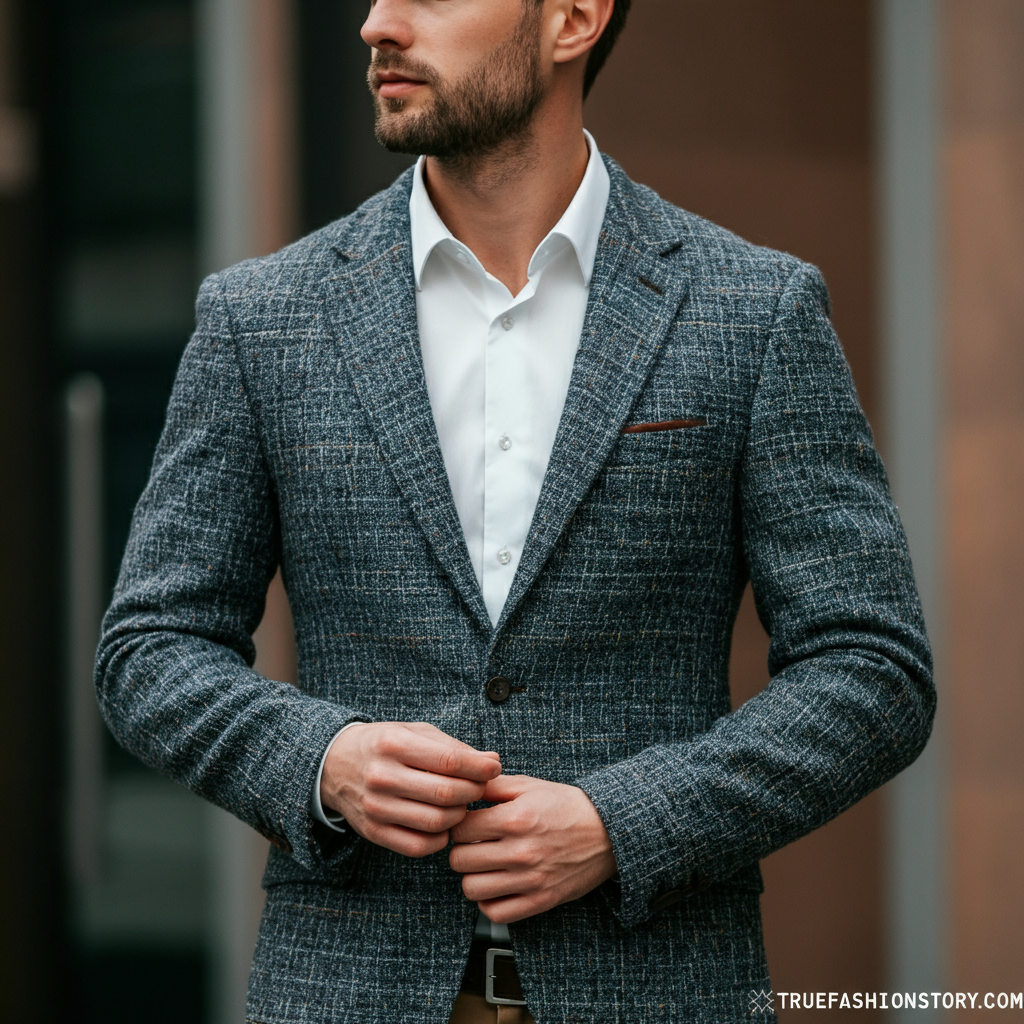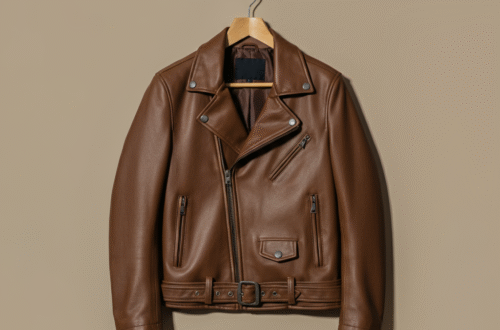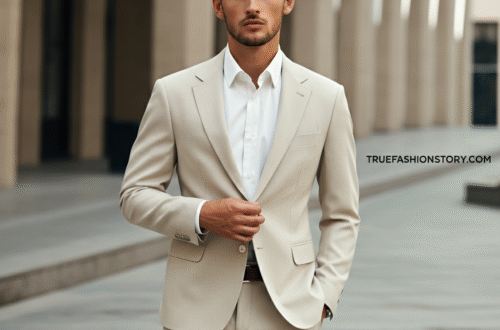The world of fashion is full of trends that come and go, but some pieces possess a timeless quality that makes them permanent fixtures in a stylish wardrobe. The tweed jacket is a perfect example of such an item. With its rich history, durable fabric, and versatile nature, this classic garment has remained a favorite for generations. It offers a unique blend of rugged charm and sophisticated polish, making it suitable for a wide range of occasions.
This guide will explore everything you need to know about the iconic tweed jacket. We will delve into its origins, discuss the different types of tweed, and provide tips on how to style it for modern life. Whether you’re a long-time admirer or new to this classic piece, you’ll discover why a tweed jacket is a worthy investment for anyone who values enduring style.
Key Takeaways
- The tweed jacket originated in 19th-century Scotland and was designed for outdoor pursuits.
- Different types of tweed, such as Harris, Donegal, and Shetland, offer unique textures and patterns.
- A tweed jacket can be styled for casual, smart-casual, and formal occasions.
- Proper care, including brushing and spot cleaning, is essential to maintain the jacket’s longevity.
- When purchasing, consider the fit, fabric weight, and pattern to find the perfect tweed jacket for your needs.
What Exactly Is a Tweed Jacket?
At its core, a tweed jacket is a tailored coat made from tweed, a rough, woolen fabric with a flexible texture. Originally associated with the British and Irish country gentry, it was prized for its warmth and resistance to wind and water, making it ideal for outdoor activities like hunting and fishing. The fabric itself is woven in various patterns, such as plain, twill, herringbone, and check, giving each jacket a distinct character.
Today, the tweed jacket has transcended its rural roots to become a staple in urban fashion. It’s no longer just for country weekends. Men and women around the world wear it to the office, to social gatherings, and even as a stylish alternative to a formal blazer. Its ability to add texture and depth to an outfit is unmatched, offering a touch of classic heritage to contemporary looks. A well-made tweed jacket is more than just clothing; it’s a piece of history you can wear.
The Fascinating Origins of Tweed Fabric
The story of tweed begins in the 18th century with Scottish farmers who wove the durable wool fabric to withstand the harsh, damp climate of the Outer Hebrides. The name “tweed” is believed to have originated from a misunderstanding. A London merchant in 1830 received a letter about some “tweel” fabric, the Scots word for twill. He misread it as “tweed,” thinking it was named after the River Tweed, which flows through the Scottish Borders textile region. The name stuck, and the fabric’s popularity grew.
In the 19th century, British aristocrats with estates in Scotland adopted the material for their sporting attire. They commissioned unique “estate tweeds” with specific colors and patterns to serve as camouflage and identify members of their staff. This association with the upper class elevated the status of the tweed jacket, cementing its place as a symbol of refined, yet practical, style. More details on classic styles can be found on fashion resources like the truefashionstory.com Blog.
Exploring the Different Types of Tweed
Not all tweed is created equal. The region, the type of wool, and the weaving process all contribute to different varieties of the fabric, each with its own unique characteristics. Understanding these differences can help you select the perfect tweed jacket.
Harris Tweed: The Gold Standard
Perhaps the most famous of all tweeds, Harris Tweed is legally protected by an Act of Parliament. To earn the name, the fabric must be hand-woven by islanders in their homes in the Outer Hebrides of Scotland, using pure virgin wool that has been dyed and spun in the same region. A genuine Harris tweed jacket will bear the iconic Orb Mark certification, guaranteeing its authenticity and quality. It is known for its warmth and incredible durability.
Donegal Tweed: The Irish Cousin
Hailing from County Donegal, Ireland, this tweed is characterized by its plain-weave structure with small, colorful flecks of yarn woven in at irregular intervals. These specks are said to represent the Irish landscape. Donegal tweed has a slightly softer feel than Harris Tweed and offers a more rustic, informal appearance. It’s a great choice for a casual tweed jacket that still has plenty of character.
Shetland Tweed: Lightweight and Soft
Shetland tweed is made from the wool of sheep native to the Shetland Islands. This wool is exceptionally soft and fine, resulting in a lightweight and comfortable fabric. A Shetland tweed jacket is an excellent option for transitional weather or for those who find heavier tweeds too warm. It provides the classic tweed look without the bulk, making it easy to layer.
Saxony and Cheviot Tweed
Other notable types include Saxony tweed, made from fine merino wool for a soft, luxurious feel, and Cheviot tweed, made from the wool of tough Cheviot sheep. Cheviot is a heavier, crisper fabric, ideal for a durable, hard-wearing tweed jacket that can stand up to the elements.
How to Style Your Tweed Jacket
The versatility of the tweed jacket is one of its greatest strengths. It can be dressed up or down with ease, making it a valuable addition to any wardrobe.
For a Casual Weekend Look
For a relaxed and stylish weekend outfit, pair your tweed jacket with a simple crew-neck sweater or a casual button-down shirt. Dark-wash jeans or chinos are an excellent choice for trousers. Complete the look with a pair of leather boots or clean, minimalist sneakers. This combination is perfect for a walk in the park, a casual brunch, or a trip to the local market. The key is to let the tweed jacket be the star of the show by keeping the other elements simple and classic.
Creating a Smart-Casual Ensemble
A tweed jacket is the ultimate smart-casual piece. It bridges the gap between formal and informal perfectly. Wear it over a crisp dress shirt and pair it with tailored trousers, such as wool flannel or corduroys. You can add a knit tie or a silk pocket square for an extra touch of sophistication. This look works well for a creative office environment, a dinner date, or a family gathering. It projects an air of relaxed confidence and impeccable taste.
Dressing Up for Formal Occasions
While a tweed jacket is not a substitute for a tuxedo, it can be worn in more formal settings, especially for daytime events or rustic-themed weddings. Pair a dark, finely woven tweed jacket with sharp, contrasting trousers. A waistcoat, or vest, can elevate the look further. Choose a high-quality dress shirt and a classic tie to complete the ensemble. Polished leather dress shoes, like brogues or Oxfords, are a must.
Finding the Perfect Tweed Jacket: A Buying Guide
Investing in a quality tweed jacket means considering several factors to ensure you get a piece you’ll love for years.
- The Fit is Everything: A tweed jacket should fit comfortably over a shirt and a light sweater. The shoulders should be structured but not padded, and the jacket should follow the natural lines of your body without pulling.
- Fabric Weight: Consider when and where you’ll be wearing the jacket. Heavier tweeds like Harris are best for cold weather, while lighter options like Shetland are more suitable for fall and spring.
- Pattern and Color: Choose a pattern and color that complements your existing wardrobe. Classic patterns like herringbone and houndstooth are highly versatile. Earthy tones such as brown, green, and gray are traditional, but modern tweeds come in a vast range of colors.
- Check the Details: Look for quality construction, such as working button cuffs (also known as surgeon’s cuffs), a full lining, and durable buttons, often made of leather or horn.
Tweed Jacket Fabric Comparison
|
Feature |
Harris Tweed |
Donegal Tweed |
Shetland Tweed |
|---|---|---|---|
|
Origin |
Outer Hebrides, Scotland |
County Donegal, Ireland |
Shetland Islands, Scotland |
|
Texture |
Coarse, dense, durable |
Soft, with colorful flecks |
Very soft, lightweight |
|
Weight |
Medium to Heavy |
Medium |
Light to Medium |
|
Best For |
Cold weather, formal wear |
Casual, rustic looks |
Transitional seasons, layering |
|
Key Feature |
Legally protected, Orb Mark |
Characteristic colorful specks |
Exceptional softness |
Caring for Your Tweed Investment
A high-quality tweed jacket can last a lifetime with the right care. Wool is a naturally resilient fiber that doesn’t need frequent cleaning.
Routine Maintenance: After wearing, hang your tweed jacket on a wide, sturdy hanger to help it retain its shape. Use a soft-bristled clothes brush to gently remove any dust or dirt. This also revitalizes the nap of the wool.
Spot Cleaning: For small spills, act quickly. Blot the area with a clean, damp cloth. Avoid rubbing, as this can push the stain deeper into the fabric. For tougher stains, it’s best to consult a professional cleaner.
Professional Cleaning: A tweed jacket should only be dry-cleaned when absolutely necessary, perhaps once a year. Over-cleaning can strip the natural oils from the wool fibers, causing them to become brittle. Always use a reputable dry cleaner experienced with wool garments.
The Enduring Legacy of the Tweed Jacket
From the windswept hills of Scotland to the bustling streets of modern cities, the tweed jacket has proven its timeless appeal. It’s a garment that tells a story of heritage, craftsmanship, and enduring style. Its ability to adapt to different settings and personal tastes makes it a true wardrobe essential.
Investing in a tweed jacket is about more than just buying a piece of clothing; it’s about embracing a tradition of quality and sophistication. Whether you opt for a rugged Harris Tweed or a soft Shetland weave, you are acquiring a versatile companion that will serve you well for many years. As you explore the possibilities, you’ll find that a tweed jacket is one of the most reliable and stylish items you can own.
Frequently Asked Questions (FAQ)
Q: Is a tweed jacket still in style?
A: Absolutely. The tweed jacket is a classic menswear staple that never truly goes out of style. Its texture, patterns, and heritage ensure it remains a sophisticated and relevant choice for both casual and formal occasions.
Q: Can I wear a tweed jacket in the summer?
A: Traditional, heavy tweeds are generally too warm for summer. However, you can find modern, lightweight tweed jackets made from finer wool or wool-blend fabrics that are suitable for cooler summer evenings or air-conditioned environments.
Q: What is the difference between a tweed jacket and a blazer?
A: The main difference is the fabric. A tweed jacket is made specifically from tweed wool, giving it a more textured, rustic look. A blazer is typically made from a smoother fabric like worsted wool or serge and often has a more formal, structured appearance, sometimes with metal buttons.





